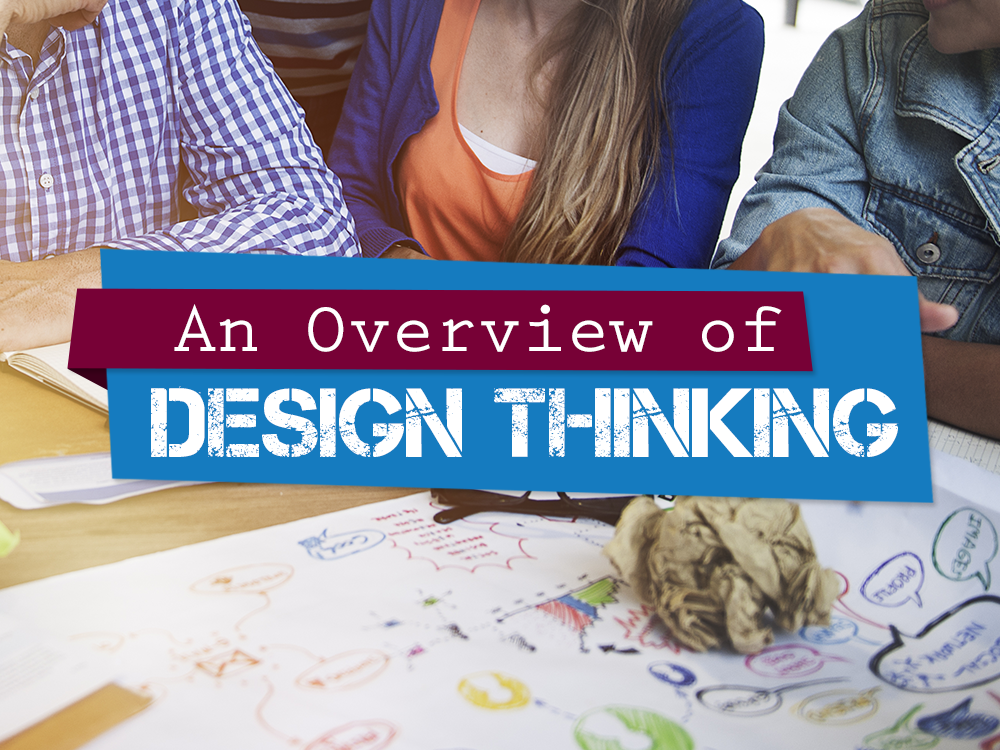An Overview of Design Thinking
When companies apply design principles to strategy and innovation, its chances of success soar dramatically. Over the past 10 years, design-led companies that include Coca-Cola, Nike, Whirlpool, Apple, IBM, Procter & Gamble and more have outperformed the S&P 500 by an astounding 219% over the past 10 years, according to an assessment by the Design Management Institute (2014).
Because companies that are design-led are succeeding at remarkable rates, many more organizations want to learn how to think like designers and to apply design principles to the workplace as a whole. With design thinking, you can manage, lead, innovate and create. This way of thinking is an excellent form of idea management that applies to systems, protocols, procedures and even customer/user experiences.
What Exactly is Design Thinking?
Design thinking is an innovative problem-solving process, established in a set of skills. Although the approach has been around for decades, it did not start gaining real traction until after a 2008 Harvard Business Review article by Tim Brown, CEO and president of design company, IDEO. The design thinking process has since been applied to developing new products and services as well as many other business related problems. Design thinking draws upon imagination, intuition, logic and systemic reasoning to discover possibilities of what could be as well as creating outcomes for the benefit of the end user (AKA the customer).
The steps involved in design thinking can be broken into four parts:
- Fully understand the problem
- Explore a wide range of potential solutions
- Iterate through prototyping and testing
- Implement
Understanding the Problem
The first step is to understand the problem you seek to solve before you begin looking for solutions. Sometimes the problem you initially set out to tackle is not the problem you need to address. Many people make the mistake of trying to solve the solution before exploring the potential problem. But the problem is almost always bigger than people assume, which is why design thinking is so important.
Involving Users
Imagine you are designing new shoes for people with bad knees but you don’t have bad knees and can’t adequately test it or know what the customers need. It is important to take time to observe and speak with real customers in the design thinking process, which is why it is often referred to as human-centered design.
Brainstorming
During phase 2 of design thinking, brainstorming sessions take place. During these sessions, the only thing to hold back is criticism. Even ideas that are less than feasible can bring about useful solutions. Keep morale high by avoiding a critical attitude.
Prototype, Test, and Repeat
Once the problem has been defined, you have talked to customers and you have brainstormed with your team, you may find a solution you think will work. The next step is to try it. Explore those potential solutions by modeling and prototyping. This aspect of the design iteration process is critical for effective business innovation. Sometimes it works quickly but more often than not you will need to improve through a few more iterations.
Implementing
Once you have the best possible solution from the above steps, implementation takes place. Your team will then spend much of its money, time and energy here. It is vital that you are sure you have everything right up until this stage so this step is not all for not.
Remember that design thinking can be applied to any problem in your company that requires a creative solution. Do not limit yourself or your company by only applying it to “things.” Design thinking can help you to grow your market, rethink product offerings, offer more value or stay relevant and innovate.

